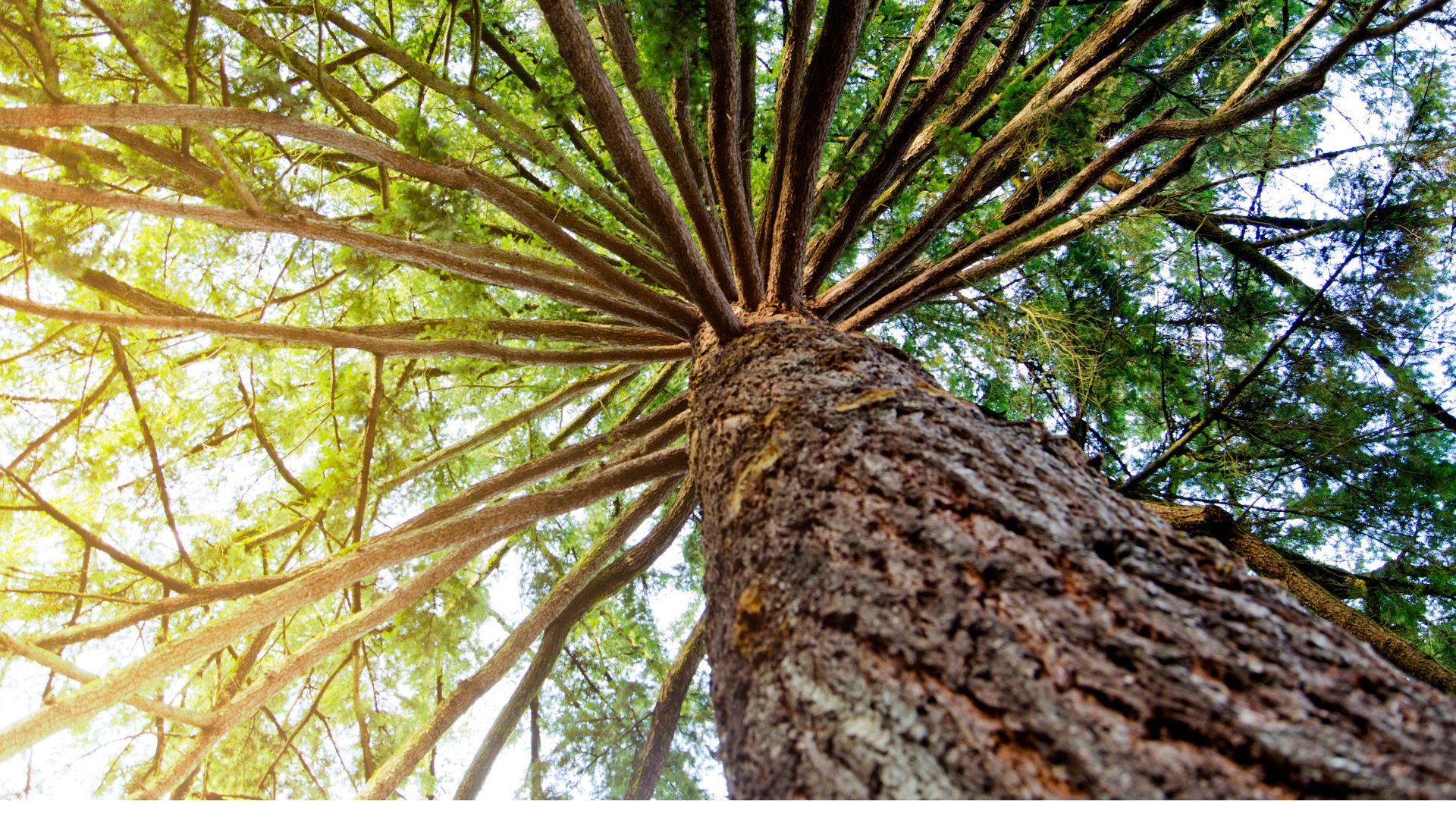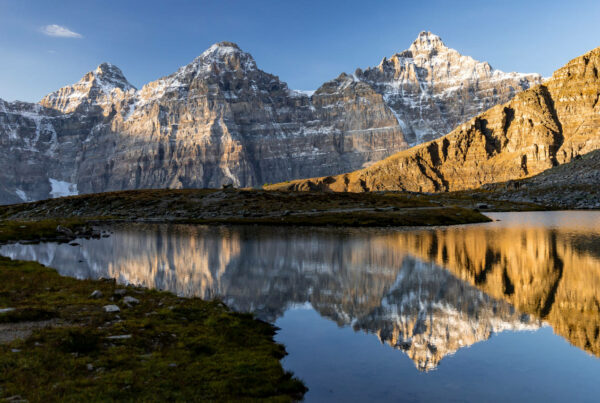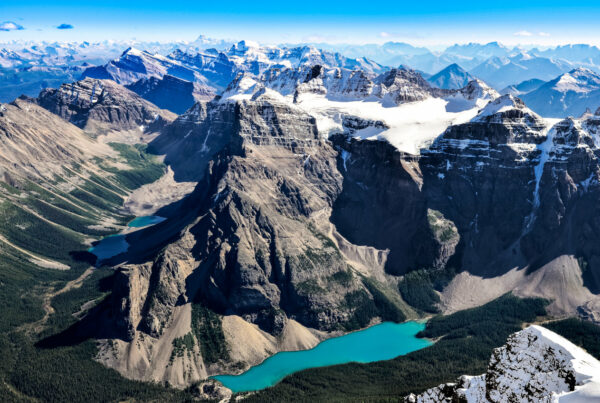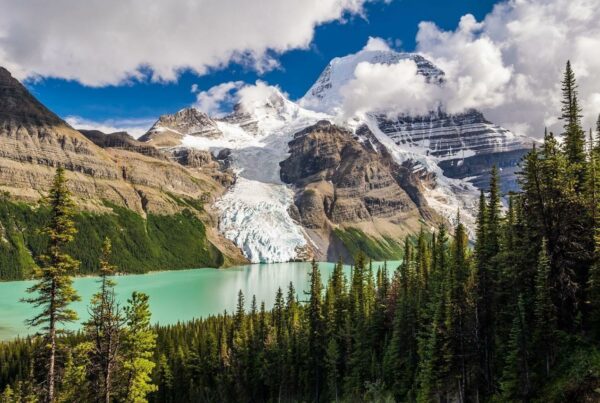The Canadian Rockies are much drier and sunnier than the inland rainforests to the west, but that doesn’t mean Banff doesn’t also have small pockets of spectacular old-growth trees.
If you are a tourist visiting Banff National Park, the easiest place to see an ancient Douglas Fir tree is beside the parking lot at the popular Norquay Lookout.
If you would like to explore a wilder and less crowded area then I recommend the trails around Johnson Lake.
Johnson Lake And The Fairholme Range
Banff has a lot to offer once you get away from the crowds but over 90% of people that visit Banff National Park don’t get 10 minutes from a parking lot.
If you would like to go into the wild and explore some of the quieter trails in the national park then the area around Johnson Lake is thought to have the oldest Douglas Fir trees in the region.
Some of the highest rainfall near the town of Banff is in the forests along the Fairholme bench that begins in the Johnson Lake area to the southeast of Lake Minnewanka and Two Jacks Lake.
The oldest Douglas Fir tree along the Fairholme bench is estimated to be 714 years old. This likely makes it the oldest Douglas Fir tree in Banff National Park.
To put the age of this tree in perspective, it was estimated to have sprouted from a seed in 1310 and it was already 182 years old when Columbus arrived in the Americas.
It has thrived on the edge of a dry grassy knoll atop several hoodoos on the lower Fairholme benchlands overlooking Mount Rundle.
In pockets around Banff, you will find ancient Douglas Firs because their thick burly bark can withstand the low-intensity fires common to the montane ecosystem and the oldest trees often grow along grasslands because the grassy areas provide extra protection from wildfires.
Finding The Mother Tree
One of my favourite experiential learning activities is going big tree hunting in search of a Mother Tree.
In Banff National Park, the key Mother Tree is the Douglas Fir. After all, the Bow River that runs through this valley is named after this tree as the local First Nations people used the Douglas Fir tree growing near the river to make bows.
Douglas Firs are very important for the overall ecosystem as they provide a much better habitat for wildlife than the thick stands of tall and skinny lodgepole pines that are so common in the Bow Valley.
Jane Park, a fire and vegetation specialist working in Banff National Park explains that “many species of birds eat Douglas fir seeds, while bears use the bark of young trees for food. Douglas fir trees, in combination with grasslands, are also important in maintaining browsing habitat for animals like elk and deer. They are extremely productive areas for wildlife.”
Another thing that the Douglas Fir is great for is its mycorrhizal relationship with other 1,500 species of mushrooms. Mycorrhizal mushrooms grow on the forest floor and are embedded in the root systems of the trees.
The areas around old and large Douglas Fir trees tend to have more rarely seen mushrooms in the area because these ancient groves are so rare in the sunny and dry frontal ranges of the Canadian Rockies.
Interesting Facts About Alberta’s Ancient Trees:
While the oldest and largest trees in Canada tend to be the Western Red Cedars and Douglas Firs in the inland and coastal rainforests of British Columbia — Banff and the province of Alberta also have their fair share of ancient trees that grow in small pockets in the Rocky Mountains:
A limber pine tree that grows from a rock at Whirlpool Point on the North Saskatchewan River is estimated to be 2000-3000 years old, which makes it likely the oldest tree in Alberta. It grows on the edge of Banff National Park in the Kootenay Plains Ecological Reserve.
A subalpine larch growing in Highwood Pass in Kananaskis Country is believed to be close to 2000 years old.
Here are some other species of local trees that can live for long periods of time:
- Giant Engelmann spruce trees found in the Rockies can be as old as 1,000 years
- Whitebark pine trees grow in the higher alpine and can also live for more than 1,000 years
- White spruce in the frontal ranges can grow for more than 300 years in the alpine
- Although rare, there are small groves of Western Red Cedar in Banff and Jasper
If you would like to explore more ancient old-growth trees in Western Canada, I’d recommend visiting Revelstoke or Vancouver Island.
- 10 Sustainable Travel Trends Driving The Future of Tourism - March 9, 2025
- 10 Tips To Sell Out Your Transformational Retreats In 2025 - February 20, 2025
- Build 10 Habits That Free Up Your Time With Mindful Coaching - February 11, 2025





